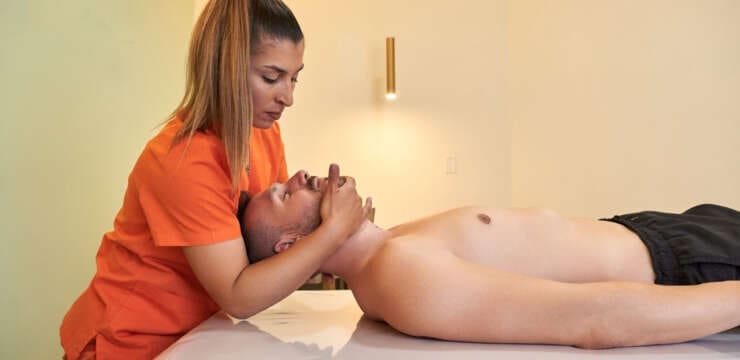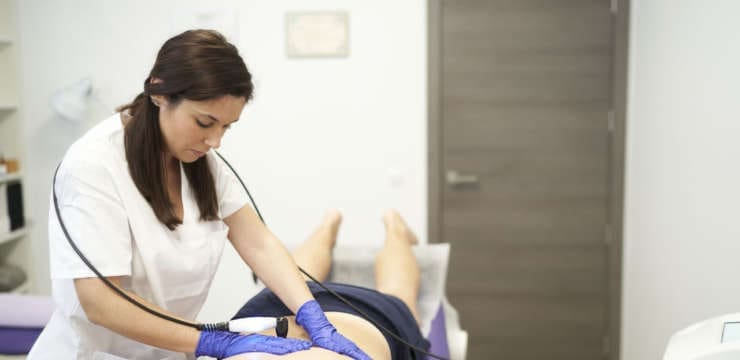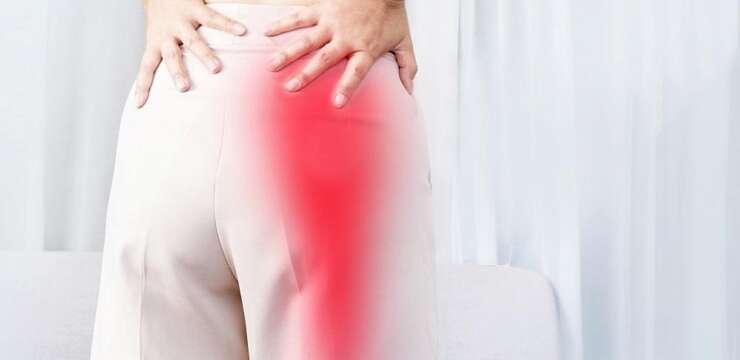
Table of Contents
Whole-Body Recovery After a Car Accident: How Chiropractic and Integrative Care Help Heal the Invisible Injuries

Motor vehicle accidents can cause more than just dents and bruises—they often leave behind hidden injuries that don’t show up on scans or in emergency room reports. The sudden impact of a crash can jolt the spine, damage soft tissues, inflame nerves, and disrupt the body’s natural rhythm. Many people walk away feeling “shaken up,” only to experience headaches, neck stiffness, or back pain days later.
This is where a whole-body approach becomes vital.
Chiropractic care, combined with nurse practitioner-led diagnostics and integrative health strategies, can help uncover and address the true root causes of pain and dysfunction after an accident. Rather than masking symptoms with temporary fixes, this approach works to correct spinal misalignments, calm inflammation, and restore the body’s self-healing ability.
Let’s explore how car crashes affect the musculoskeletal and nervous systems—and how a team-based strategy using chiropractic, nurse practitioner insight, and holistic healing can support full recovery.
The Aftermath of an Auto Accident: What Happens to the Body?
Auto accidents create forceful movements that the human body wasn’t designed to absorb. Even low-speed impacts can produce injuries with long-term consequences if left untreated. Some of the most common problems include:
Whiplash and Soft Tissue Damage
When the neck is suddenly whipped forward and back—such as in rear-end collisions—it causes microtears in the muscles, ligaments, and fascia. This “whiplash” effect can lead to stiffness, reduced range of motion, and radiating pain. Soft tissue injuries may not be visible on X-rays but often result in chronic discomfort if not addressed promptly (LeBaron Chiropractic, 2025).
Misaligned Spinal Vertebrae
Sudden trauma can cause spinal vertebrae to shift out of place, irritating nearby nerves. This often leads to headaches, neck or back pain, and fatigue. Chiropractic care helps restore alignment, relieve pressure on nerves, and support natural balance. (Tradition Health, 2025).
Nerve Involvement
Compressed or irritated nerves can cause tingling, numbness, burning sensations, or muscle weakness—especially in the arms, hands, legs, or feet. These symptoms point to deeper issues, such as disc herniations or spinal instability, that require focused therapy and diagnostics (Punta Gorda Chiropractic, 2025).
Ligament Damage and Scar Tissue
The body responds to trauma by forming scar tissue. However, if left unmanaged, this tissue can reduce flexibility and trap inflammation. Chiropractic adjustments and myofascial therapy help break down adhesions, restoring smooth and functional movement (Meridian Healthcare, 2025).
Why Chiropractic Care Is a Key Part of Recovery
Chiropractic care focuses on structural correction—realigning the spine, improving nervous system flow, and reducing musculoskeletal tension. This makes it uniquely suited to treat the effects of motor vehicle accidents.
Drug-Free, Hands-On Relief
Instead of masking pain with medication, chiropractors work to resolve the underlying issue. Using spinal adjustments, soft tissue therapies, and functional mobility techniques, they help the body heal itself. This approach is particularly appealing to those who want natural, long-term solutions without side effects (Accident Doctor GA, 2025).
Spinal Realignment Restores Movement
The shock from an accident can cause spinal vertebrae to shift slightly—a condition called subluxation. These misalignments can compress nerves, alter gait, and trigger inflammation. Chiropractors use precise adjustments to realign the spine, ease tension, and allow the body’s healing processes to flow naturally (Complete Spine Solutions, 2025).
Healing Whiplash Naturally
Evidence-based chiropractic techniques like spinal manipulation, active release therapy, and posture training offer excellent outcomes for whiplash. These therapies relieve stiffness, increase circulation, and help reset muscle memory—without the need for medications or injections (Eugene Chiropractor, 2025).
Nurse Practitioners: The Diagnostic Bridge in Integrative Injury Care
In integrative recovery, nurse practitioners serve as a clinical bridge—offering insight into whole-body function, ordering imaging, and overseeing systemic health.
Holistic Evaluation and Medical Oversight
Nurse practitioners are trained to identify issues like delayed-onset concussion, internal inflammation, or adrenal stress following trauma. Their evaluations extend beyond physical symptoms to encompass emotional well-being, immune response, and sleep quality, providing patients with a more comprehensive care plan.
Imaging and Advanced Testing
When deeper damage is suspected—such as disc herniation, ligament rupture, or nerve impingement—NPs can order and interpret imaging (MRI, CT, X-ray) to confirm the root cause and track healing progress. This diagnostic capability ensures nothing gets missed during early intervention (Waldron Chiropractic, 2025).
Coordinated, Team-Based Healing
Together, NPs and chiropractors collaborate to create a customized plan that includes realignment for structural issues, manual therapy for improved mobility, and targeted supplementation or stress management as needed. This dual-scope collaboration is highly effective in preventing chronic pain and restoring long-term vitality.
How Functional Rehabilitation Prevents Long-Term Injury
Recovering from a crash isn’t just about getting rid of pain—it’s about building back better. Functional rehabilitation is designed to restore strength, coordination, posture, and range of motion to the body, making it less likely for future injuries to occur.
Myofascial Release and Scar Tissue Remodeling
After trauma, the body creates adhesions in muscle and connective tissue. These must be addressed early to avoid lasting stiffness. Chiropractors use soft tissue mobilization, active release techniques, and cupping to restore tissue glide and reduce inflammation (Injury 2 Wellness, 2025).
Spinal Decompression and Traction
For those with disc compression or nerve pain, spinal decompression can relieve pressure and encourage disc rehydration. Manual or table-based traction is often included in post-accident therapy to support spine health and reduce radiating pain (Aim High Health, 2025).
Posture Correction and Mobility Training
Forward head posture, rounded shoulders, and lower back strain are common symptoms that often occur after MVAs. Corrective exercises and ergonomic coaching help retrain the body’s posture and core function, making recovery sustainable rather than temporary (MetroWest Spine Clinic, 2025).
Lifelong Wellness After a Motor Vehicle Accident
The end goal isn’t just recovery—it’s resilience. Integrative care offers long-term benefits for anyone healing after a collision, including:
- Improved flexibility and range of motion
- Stronger core and spinal stability
- Reduced flare-ups and less reliance on medications
- Better stress regulation and sleep
- Prevention of chronic injury or relapse
Patients who continue with monthly chiropractic care, lifestyle coaching, and wellness visits often report fewer symptoms and greater vitality than before the accident occurred (Chiropractor in Oviedo, 2025).
Final Thoughts: Choose Care That Sees the Whole You
Motor vehicle accidents affect more than just your joints—they affect your whole person. Pain may begin in the spine, but it quickly spreads into how you move, think, and feel. By choosing care that blends chiropractic precision with integrative insight, you give yourself the best chance to heal completely.
Don’t settle for temporary relief or fragmented care. Work with providers who treat the root causes, coordinate your plan, and offer holistic, lasting solutions. Whether your injuries are new or lingering, this path can help you rebuild your health—mind, and body—better than before.
References
-
Accident Doctor GA. (2025). The 7 benefits of chiropractic treatment after a car accident
-
Chiropractor in Oviedo. (2025). 10 reasons to see a car accident chiropractor
-
Complete Spine Solutions. (2025). Car accident chiropractor benefits
-
Dallas Accident & Injury Rehab. (2025). Benefits of ongoing chiropractic care
-
Eugene Chiropractor. (2025). Evidence-based whiplash treatments
-
Injury 2 Wellness. (2025). Whiplash relief through chiropractic
-
Lorfing Law. (2025). Should I go to a chiropractor after a car accident in Texas?
-
Meridian Healthcare. (2025). Should you book a post-car accident chiropractor visit?
-
MetroWest Spine Clinic. (2025). 9 benefits of chiropractic care after an auto accident
-
Punta Gorda Chiropractic. (2025). Chiropractic care vs physical therapy
-
Thistle Chiropractic. (2025). Research supports chiropractic for auto injuries
-
Tradition Health. (2025). Chiropractic treatment after car accidents
-
Waldron Chiropractic. (2025). Chiropractic treatment for chronic whiplash
-
Wirth Chiropractic. (n.d.). How chiropractors and physical therapists help car accident victims
Disclaimers
Professional Scope of Practice *
The information herein on "Whole-body Crash Rehabilitation: Addressing Hidden Injuries" is not intended to replace a one-on-one relationship with a qualified health care professional or licensed physician and is not medical advice. We encourage you to make healthcare decisions based on your research and partnership with a qualified healthcare professional.
Blog Information & Scope Discussions
Welcome to El Paso's wellness blog, where Dr. Alex Jimenez, DC, FNP-C, a board-certified Family Practice Nurse Practitioner (FNP-C) and Chiropractor (DC), presents insights on how our team is dedicated to holistic healing and personalized care. Our practice aligns with evidence-based treatment protocols inspired by integrative medicine principles, similar to those found on dralexjimenez.com, focusing on restoring health naturally for patients of all ages.
Our areas of chiropractic practice include Wellness & Nutrition, Chronic Pain, Personal Injury, Auto Accident Care, Work Injuries, Back Injury, Low Back Pain, Neck Pain, Migraine Headaches, Sports Injuries, Severe Sciatica, Scoliosis, Complex Herniated Discs, Fibromyalgia, Chronic Pain, Complex Injuries, Stress Management, Functional Medicine Treatments, and in-scope care protocols.
Our information scope is limited to chiropractic, musculoskeletal, physical medicine, wellness, contributing etiological viscerosomatic disturbances within clinical presentations, associated somato-visceral reflex clinical dynamics, subluxation complexes, sensitive health issues, and functional medicine articles, topics, and discussions.
We provide and present clinical collaboration with specialists from various disciplines. Each specialist is governed by their professional scope of practice and their jurisdiction of licensure. We use functional health & wellness protocols to treat and support care for the injuries or disorders of the musculoskeletal system.
Our videos, posts, topics, subjects, and insights cover clinical matters, issues, and topics that relate to and directly or indirectly support our clinical scope of practice.*
Our office has reasonably attempted to provide supportive citations and has identified the relevant research studies or studies supporting our posts. We provide copies of supporting research studies available to regulatory boards and the public upon request.
We understand that we cover matters that require an additional explanation of how they may assist in a particular care plan or treatment protocol; therefore, to discuss the subject matter above further, please feel free to ask Dr. Alex Jimenez, DC, APRN, FNP-BC, or contact us at 915-850-0900.
We are here to help you and your family.
Blessings
Dr. Alex Jimenez DC, MSACP, APRN, FNP-BC*, CCST, IFMCP, CFMP, ATN
email: coach@elpasofunctionalmedicine.com
Licensed as a Doctor of Chiropractic (DC) in Texas & New Mexico*
Texas DC License # TX5807
New Mexico DC License # NM-DC2182
Licensed as a Registered Nurse (RN*) in Texas & Multistate
Texas RN License # 1191402
ANCC FNP-BC: Board Certified Nurse Practitioner*
Compact Status: Multi-State License: Authorized to Practice in 40 States*
Graduate with Honors: ICHS: MSN-FNP (Family Nurse Practitioner Program)
Degree Granted. Master's in Family Practice MSN Diploma (Cum Laude)
Dr. Alex Jimenez, DC, APRN, FNP-BC*, CFMP, IFMCP, ATN, CCST
My Digital Business Card






